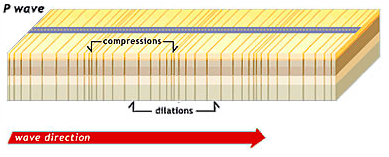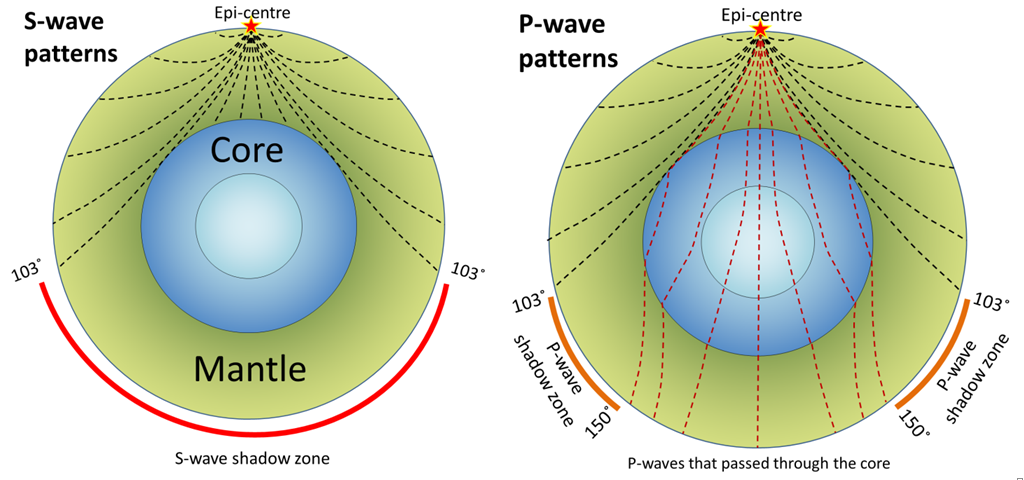Seismic Waves
Cross-Section of Earth

⇒ This is the internal structure of the Earth
⇒ The outside of the Earth is the solid crust - the crust is very thin with a maximum depth of around 50km
⇒ Under the crust we have the mantle - this is a solid, even though parts of the upper mantle can flow very slowly
⇒ Under this we have the outer core (this is a liquid) and the inner core (which is solid)
⇒ There is no way for scientists to directly observe the interior of the Earth
- Even the deepest mines only go a few kilometers into the crust
⇒ How do scientists know that the interior of the earth has this structure? The answer is to do with earthquakes
Earthquakes

⇒ An earthquake happens due to a sudden movement between the tectonic plates in the Earth's crust
⇒ This causes seismic waves which carry energy away from the earthquake
⇒ These seismic waves then pass through the Earth and they can be detected by seismometers in different countries
⇒ The patterns of these waves gives us information about the interior of the Earth
Types of Seismic Waves
⇒ There are two main types of seismic waves: P Waves and S Waves
P Waves

⇒ P waves are longitudina waves. They can pass through both solids and liquids
⇒ P waves travel faster than S waves
S Waves

⇒ S Waves are transverse waves (to remember this, remember the word 'transverse' contains the letter S)
⇒ S waves can only travel through solids
S and P Wave Impact

⇒ Imagine an earthquake takes place at a point on the Earth (the top of the drawing above, at the epicentre)
⇒ Seismometers on the Earth's surface can now detect the seismic waves after they have passed through the Earth
- We will now look at the patterns of P and S Waves
⇒ On the left shows S Wave patterns
- Seismic waves travel in curved paths. That is due to density changes in the Earth
- We can detect S Waves at any point on the Earth's surface where the S Wave is spread across i.e. the area not within the S wave shadow zone
- There are large parts of the Earth where no S waves can be detected - this is called the S Wave shadow zone
- This is due to the fact that S waves cannot pass through a liquid
- This told scientists that the Earth must contain a liquid core
⇒ On the right shows P wave patterns
- P waves can be detected over large parts of the Earth except the P wave shadow zone
- Again, there are parts of the Earth where P waves cannot be detected - these are called P wave shadow zones
- The P wave shadow zones are due to the fact that P waves travel faster in solids than liquids
- This means that the P waves slow down as they enter the liquid outer core. This causes them to refract (i.e. change direction). They also refract when they leave the outer core.
- Once again this confirms that the outer core is a liquid
- Sometimes faint P waves can be detected in the P wave shadow zone - this was used by scientisits to show that the Earth also contains a solid inner core
⇒ Scientists have measured seismic waves from thousands of earthquakes
⇒ They have used these to work out the thickness of the crust and mantle and outer and inner cores